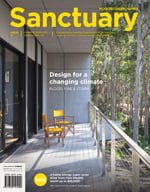Village green
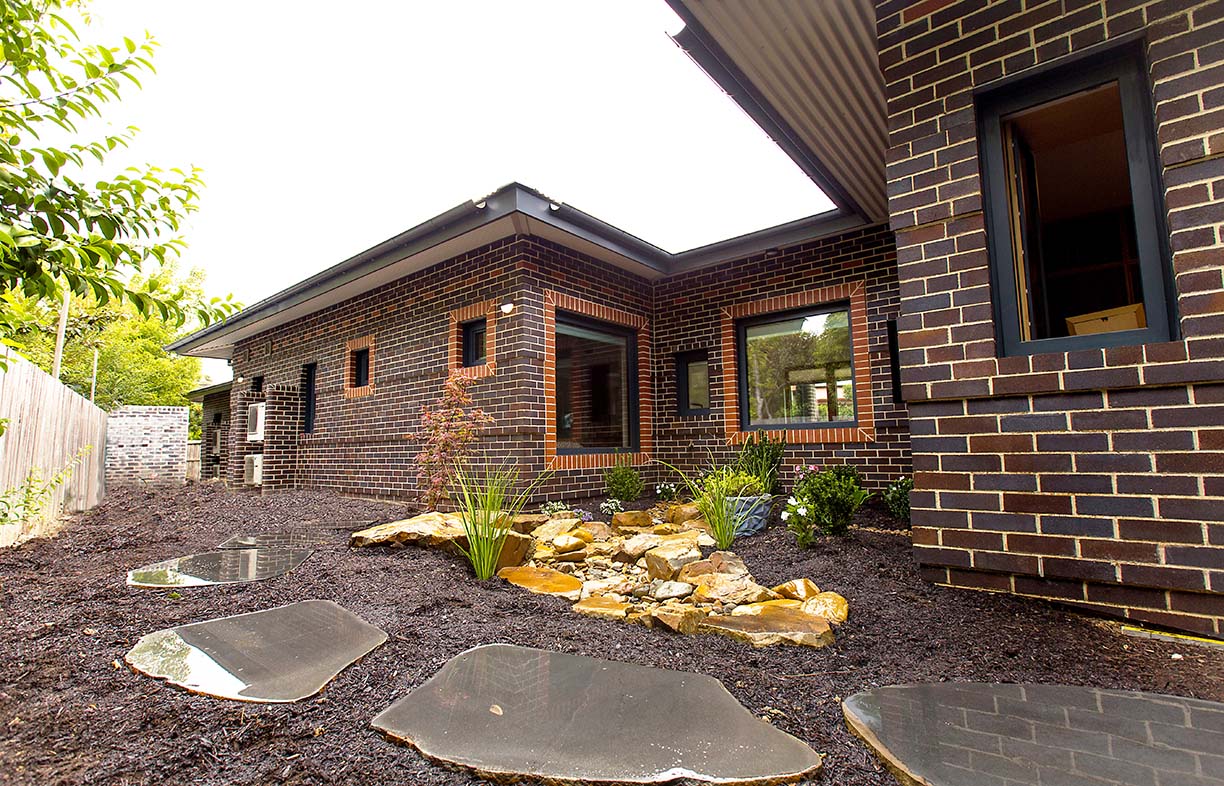
At a glance
- Two dwellings on one block for communal living
- Designed for ageing in place and changing family needs
- Excellent thermal performance, highly energy efficient
- Whole-block water harvesting system supports integrated
Built to Passive House standards, this ‘micro-village’ on a single Canberra block offers flexible multi-generational living, nestled in an innovative water harvesting landscape.
For 12 years, this Canberra family – a couple and their two daughters – lived in a regular home in the capital’s inner suburbs. But in 2014, their home was identified as a ‘Mr Fluffy house’: one of about 1000 contaminated by loose-fill asbestos insulation sold by a company of that name during the 1960s and 1970s.
The ACT government initiated a buy-back scheme to acquire and demolish the affected houses, so the family found themselves househunting. They sought flexible accommodation that would suit the parents into their retirement, and cater to their university-aged children. However, their initial search proved fruitless.
“We’d been in our previous home for many years; we liked the neighbourhood and our house was opposite a park,” one of the owners says. “We searched everywhere for a new place, but couldn’t find anything that suited us, although that process helped us to work out what we did and didn’t like.”
They decided to purchase a vacant site in their existing street, and engaged friend and architect Paul Barnett to guide them through the process of building two linked high-performance dwellings on the standard suburban block, an approach he calls a ‘micro-village’.
“We are creating micro-villages as a rethink on homes in a village setting, to serve families, friends and tenants over life’s various phases,” Paul says.
“When we started the project, we had two daughters at university and we didn’t know what their housing situation would be in future,” the owner explains. “We knew that young adult children often move out and come back, so we wanted to be prepared for that. We also wanted a home that would be comfortable for two retired people to live in, with a reasonable amount of garden around it.”
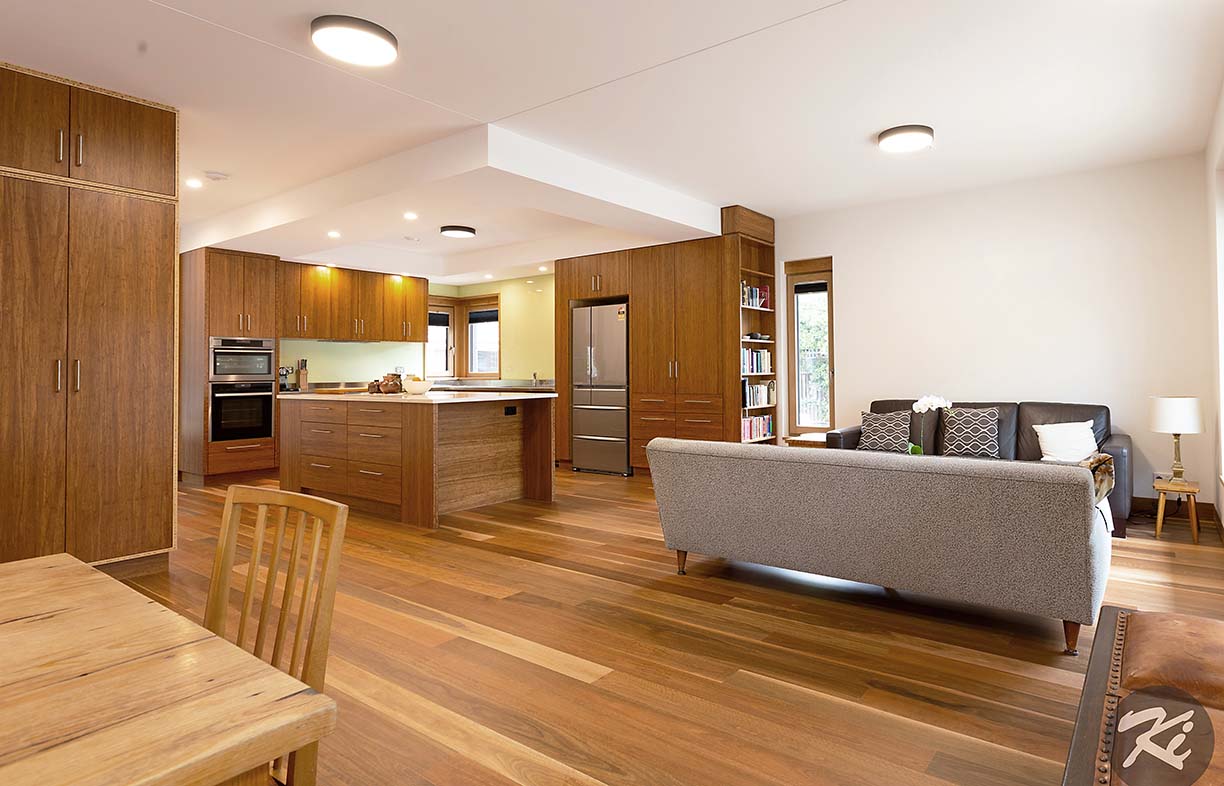
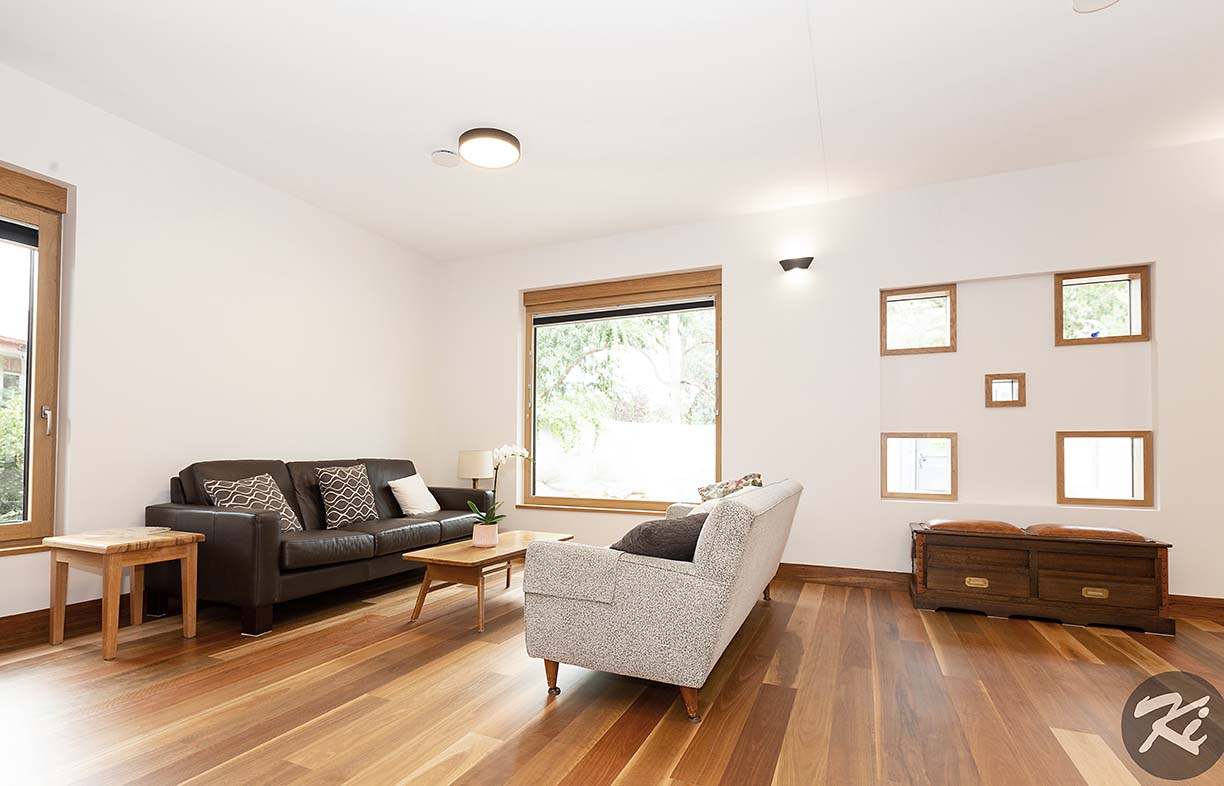
The result is a series of ‘pods’, the first two connected by a glazed link and comprising the 185-square-metre main house, which has two bedrooms and a study. The third pod is a self-contained one-bedroom unit of 49 square metres at the rear of the block.
Interested in the thermal performance possibilities of the Passive House standard, the couple visited Paul’s first Passive House-inspired project at Carwoola (profiled in Sanctuary 40) and the Chifley Passive House, completed in 2014 in suburban Canberra (see our sister magazine Renew 133 for more).
Their own design was solar modelled to bring in winter sun while excluding summer sun, Paul says. “The most challenging part was the link between pods, with glazing that faces west,” he explains. “This will be protected by deciduous trees in summer, while winter sun will gain access in the afternoon.”
Although they haven’t had it officially certified, the project was designed and built with Passive House principles in mind. The design was thermally modelled and careful construction methods employed to reduce thermal bridges between inside and outside to maintain stable indoor temperatures. Both homes feature advanced mechanical ventilation with heat recovery (MVHR) systems and high-performance triple-glazed windows sourced from Germany.
Each building is wrapped in a vapour-permeable and airtight membrane with every joint taped to ensure there are no air leaks. “We did a blower test and the result was airtightness of 0.25 air changes per hour at 50 pascals,” the owner says. “The temperature inside is always very comfortable. For example, we don’t need to have any heating in the bathroom because there are no draughts; it’s perfectly comfortable even in the middle of winter.”
In keeping with the owners’ desire for robust yet crafted materials, the external brickwork was made by artisan bricklayers who utilised six different patterns and laying techniques to create a beautiful and durable skin. The interior is finished mainly with bamboo joinery and natural oil waxes, and the floors are solid timber and Marmoleum.
In March 2019, most of the family moved in: the parents took up residence in the front house and their younger daughter currently lives in the one-bedroom unit at the rear.
“We were mindful of producing a home that would be flexible and suit a range of family configurations in future,” the owners say, “such as adult children living at home or older family members being close and semi-independent.”
As well as pushing the energy efficiency and thermal performance envelopes and providing a flexible solution for multi-generational living, the house also benefits from an innovative landscaping design. It’s one of the first residential applications of Paul’s ‘water-harvested naturescapes’ approach, which he has tried and tested at local schools for the past 12 years. The method has been shown to improve tree growth by about 300 per cent.
“The entire site is trenched, with trenches about one metre deep that are filled with gravel and sand,” Paul explains. “They are carefully levelled and linked to capture and store all the stormwater that falls on the block, including overflow from the rainwater tank. The idea is to raise the overall moisture content of the soil.”
The combination of trenches, water collection and distribution, and tree and plant selection – along with stormwater inlet points (or ‘sips’, a phrase coined by water-harvesting inventor Paul Totterdell) – is referred to as a naturescape. “It creates a beautiful abundant landscape to grow flowers, herbs, vegetables and fruit, and to create a setting for biodiversity,” Paul continues.
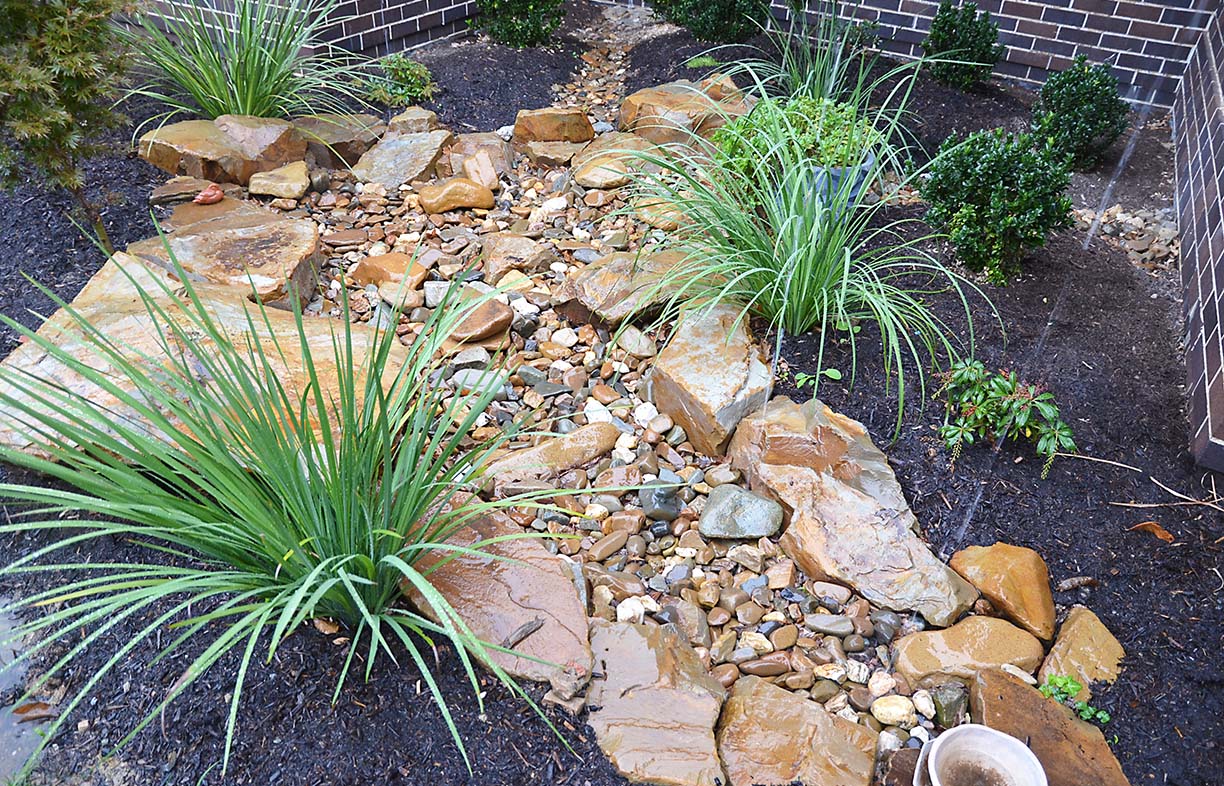
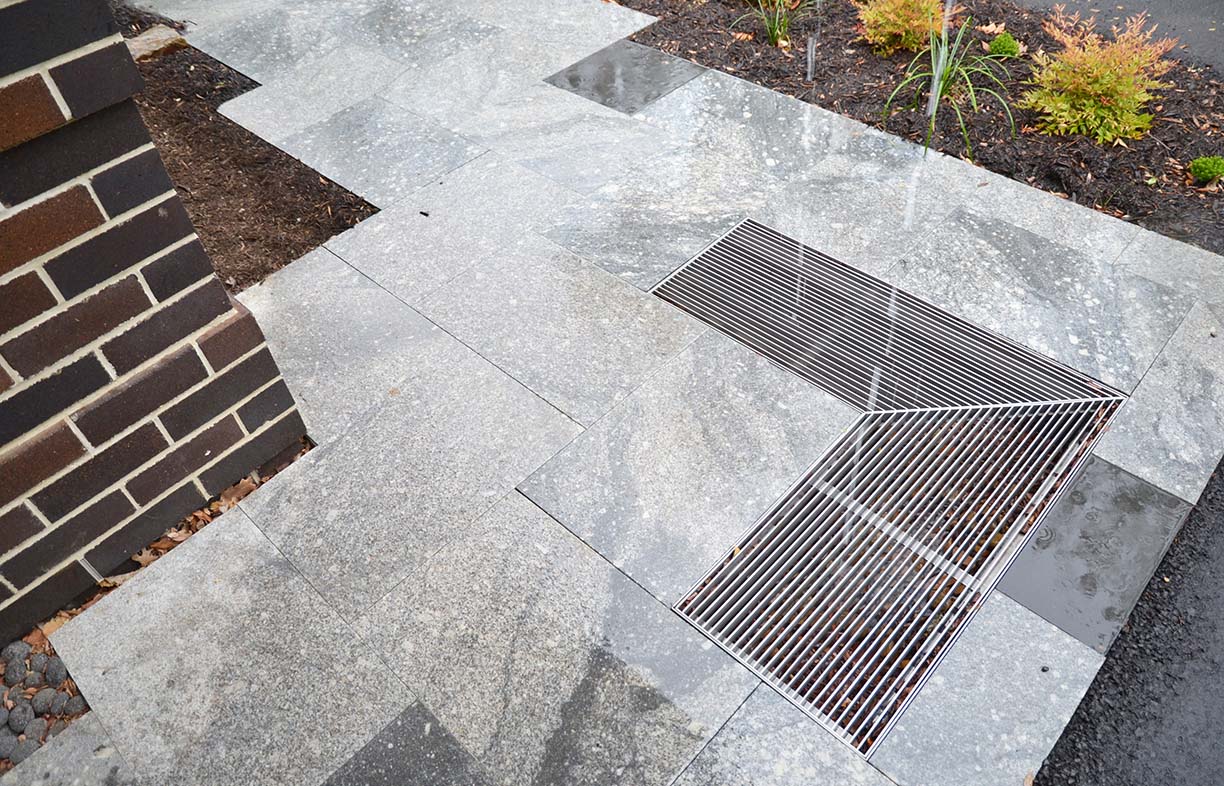
The owners have already planted many trees and shrubs that will eventually form a dense green canopy around the two homes, which are separated by a low bridge.
“The water harvesting made a lot of sense to us because the stormwater gets down into the soil instead of just washing away,” the owner says. “We moved in last March, when they were still laying the paths around the house, and we started planting in August, continuing through to October when it started to get too hot. We planted a flowering plum that’s grown over a metre in that time: once the trees start to get their toes into the trenches, they grow really well,” she adds.
So how did the enforced move work out for this family?
“From our point of view, the build ran very smoothly,” they say. “The architect and builder Robert Hunklinger from Gen5 Constructions had a good working relationship, and the process of collaboration worked very well. We’re pleased with the comfort and the standard of finish. We couldn’t be happier with the outcome.”
And for Paul, this house – his second design to Passive House principles – has a quiet, peaceful and timeless quality. “It feels welcoming and connects with nature with its articulated form,” he says. “It is a high-quality enduring building, with an integrated landscape that will serve multi-generation families for many years to come.”
further reading
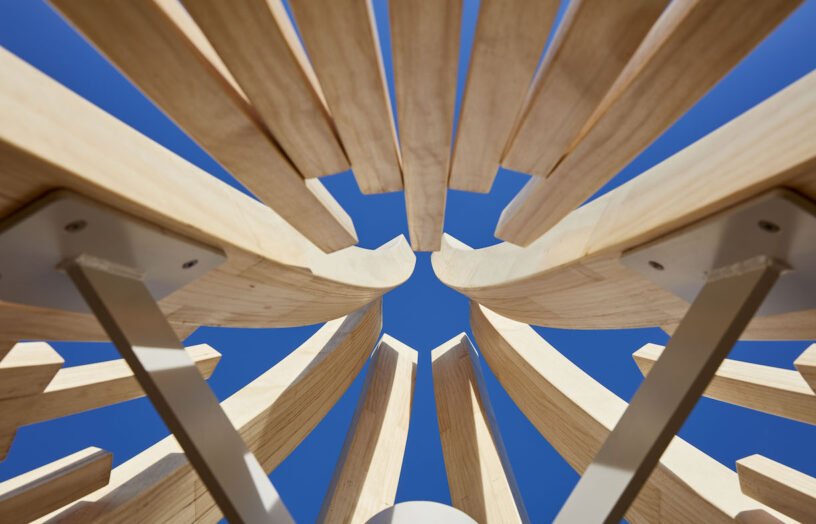 Ideas & Advice
Ideas & Advice
In praise of Accoya
Native hardwoods are beautiful, strong and durable, but we need to wean ourselves off destructive forestry practices. Building designer and recreational woodworker Dick Clarke takes one hardwood alternative for a test run.
Read more House profiles
House profiles
Airy flair
A minimalist renovation to their 1970s Queenslander unlocked natural ventilation, energy efficiency and more useable space for this Cairns family.
Read more House profiles
House profiles
Pretty in pink
This subtropical home challenges the status quo – and not just with its colour scheme.
Read more

